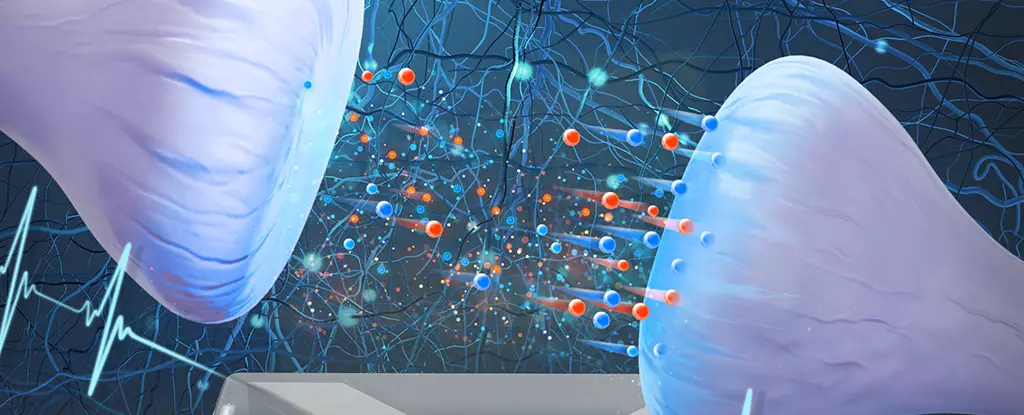In a groundbreaking development, researchers have successfully simulated neurological junctions, known as synapses, using a combination of water and salt – the same ingredients utilized by the human brain. This advancement is a significant contribution to the emerging field of iontronics, which integrates principles from both biology and electronics.
The team of scientists from Utrecht University in the Netherlands and Sogang University in South Korea drew inspiration from the complex functioning of the human brain, which relies on charged particles called ions dissolved in water to transmit signals within neurons. One of the key features of the brain’s information processing capabilities is synaptic plasticity, which enables neurons to adjust the strength of connections between them based on input history.
The researchers have developed an iontronic memristor, a device that has the ability to ‘remember’ the amount of electrical charge that has previously passed through it. This innovation brings us closer to creating artificial systems that can replicate the remarkable capabilities of the human brain. The memristor, shaped like a cone and filled with a solution of water and salt, is incredibly small, measuring 150 by 200 micrometers.
Electrical impulses trigger the movement of ions through the cone-shaped channel, resulting in variations in the electrical charge and ion movement. The changes in conductivity of the synapse can be quantified and interpreted to determine the nature of the input signal, effectively acting as a form of memory storage. This innovative device is still in its early stages of development, but its potential is vast.
The researchers envision a future where these synthetic synapses can be combined in various configurations for diverse applications. Due to their cost-effectiveness and ease of production, these iontronic memristors could be scaled up for a broad range of uses. By mimicking the brain’s operational mechanisms with such precision, the scientific community is hopeful that we can achieve computing systems that rival the brain in terms of capacity and efficiency.
This groundbreaking research not only represents a significant advancement in the field of iontronics but also serves as a testament to the power of combining theoretical and experimental physics to push the boundaries of scientific knowledge. The creation of an artificial synapse using water and salt has left the researchers in awe, highlighting the immense potential of this innovative technology. As we continue to explore the possibilities of simulating neurological processes through unconventional means, we are moving closer to unlocking the full potential of artificial intelligence.



Leave a Reply